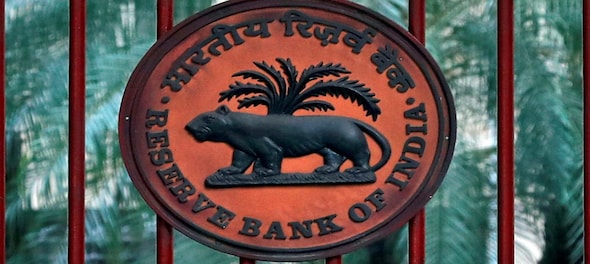
Starting the January-March quarter, banks will begin to see the impact of the Reserve Bank of India’s June 7 circular, in the form of higher provisioning for stressed accounts that have not found resolution thus far.
The 210-day deadline, including 30 days allowed under “review period” when a borrower first defaults and the subsequent 180-days allowed for implementing a resolution plan, ended in the first week of January for the first set of accounts that were stressed when the circular was introduced in June last year. For such accounts, banks will now be required to set aside an additional 20 percent provision for the delay caused in resolving stress.
RBI’s “Prudential Framework for Resolution of Stressed Assets”, or the “June 7 circular” as it is more popularly called, mandates banks to recognise stress, and initiate a review of default within 30 days (review period). Banks are allowed 180 days’ time after the 30-day review period ends to implement a resolution plan, failing which they have to hold higher provisioning of 20 percent as a punitive measure, and another 15 percent on top of the additional 20 percent if the resolution is stalled for over 365 days. This is applicable for all large accounts which have a system-wide exposure of over Rs 2,000 crores effective June 2019 and for all accounts over Rs 1,500 cr effective January 2020.
Dewan Housing Finance Limited is one of the largest such accounts that fall under the ambit of the circular. Financial creditors have made claims of over Rs 86,800 crores against DHFL, with State Bank of India’s exposure claim (including SBI Singapore) at Rs 10,082 cr, Bank of India’s at Rs 4,125 cr, Canara Bank’s at Rs 2,681 cr, Union Bank of India’s at Rs 2,378 cr, Syndicate Bank’s at Rs 2,229 cr, and Bank of Baroda’s at Rs 2,074 cr and so on.
A senior official at one of these banks told CNBC-TV18 that most banks have already classified DHFL as a non-performing asset and set aside 15 percent for it as per RBI’s Income Recognition and Asset Classification (IRAC) norms. With the 210 day deadline under the June 7 circular lapsing in January, banks will now be required to set aside an additional 20 percent provisioning for the account, taking the total provisioning to 35 percent.
However, the June 7 circular stipulates that “Where resolution is pursued under IBC – half of the additional provisions made may be reversed on the filing of insolvency application and the remaining additional provisions may be reversed upon admission of the borrower into the insolvency resolution process under IBC.” In the case of DHFL, which has now been admitted under the Insolvency & Bankruptcy Code (IBC), it remains to be seen if banks may be allowed to reverse the provisioning.
Coffee Day Enterprises, or CCD, with over Rs 4,970 crores of debt is another case that falls under the ambit of this circular, as is CG Power where the debt to domestic lenders stands at over Rs 2,300 crores, Altico Capital with Rs 4,300 cr, Cox & Kings at Rs 3,200 cr are a few others where the impact will be seen in the March quarter by banks.
While the exact number of accounts and their exposure couldn’t be immediately ascertained, a large number of accounts where Inter Creditor Agreements (ICA) have been signed under the June 7 circular in the first quarter remain unresolved, and may, therefore, face higher provisioning.
For instance, as per State Bank of India’s analyst presentation for the June quarter, there were 18 non-performing accounts with Rs 29,136 cr of exposure where the ICA was either signed or likely to be signed. SBI had a provision coverage of 52.1 percent against these 18 accounts, which means it has already provided more than the required level under June 7 circular.
However, SBI also disclosed that it had lent to 20 borrowers who were still classified as standard accounts as of the June quarter, with aggregate exposure of Rs 19,142 crores. Against these 20 standard accounts, SBI disclosed that it had only made a 14.6 percent provision coverage. For these accounts, SBI will have to set aside another 0.4 percent as per IRAC norms and the additional 20 percent under RBI’s June 7 circular in the March quarter, assuming it hasn’t already increased the coverage for these accounts in the quarter gone by, the results for which are yet to be disclosed.
Other banks, similarly, would have to also increase provision coverage for large accounts of over Rs 2,000 crores which were stressed as of June 2019 in the March quarter.
So while banks are starting to recover dues from large accounts like Essar Steel, and Ruchi Soya under the IBC, the additional provisioning that kicks in the March quarter under the June 7 circular may just prove to be a dampener.
First Published: Jan 6, 2020 10:41 PM IST
Check out our in-depth Market Coverage, Business News & get real-time Stock Market Updates on CNBC-TV18. Also, Watch our channels CNBC-TV18, CNBC Awaaz and CNBC Bajar Live on-the-go!


Lok Sabha Election 2024 Phase 5: 37% voter turnout recorded till 1 pm, highest in Ladakh at 52%
May 20, 2024 10:30 AM
Lok Sabha Election 2024: Is it mandatory for employers to give paid holiday on voting day? | Explained
May 20, 2024 10:07 AM
Lok Sabha Elections 2024 | How critical is Phase-5 for both NDA and I.N.D.I.A
May 20, 2024 7:30 AM

